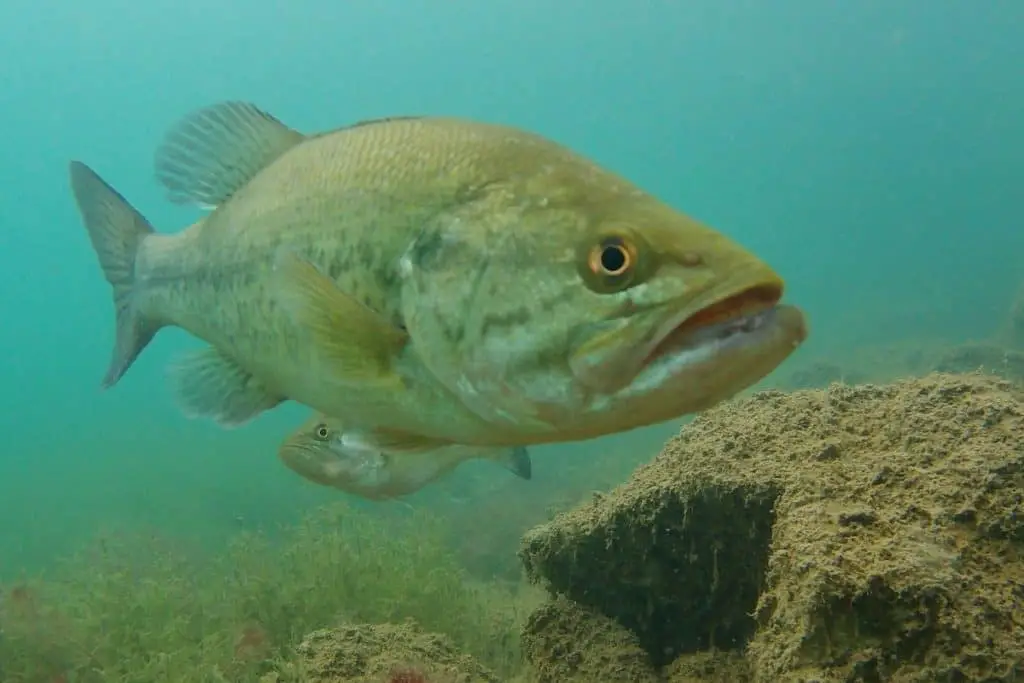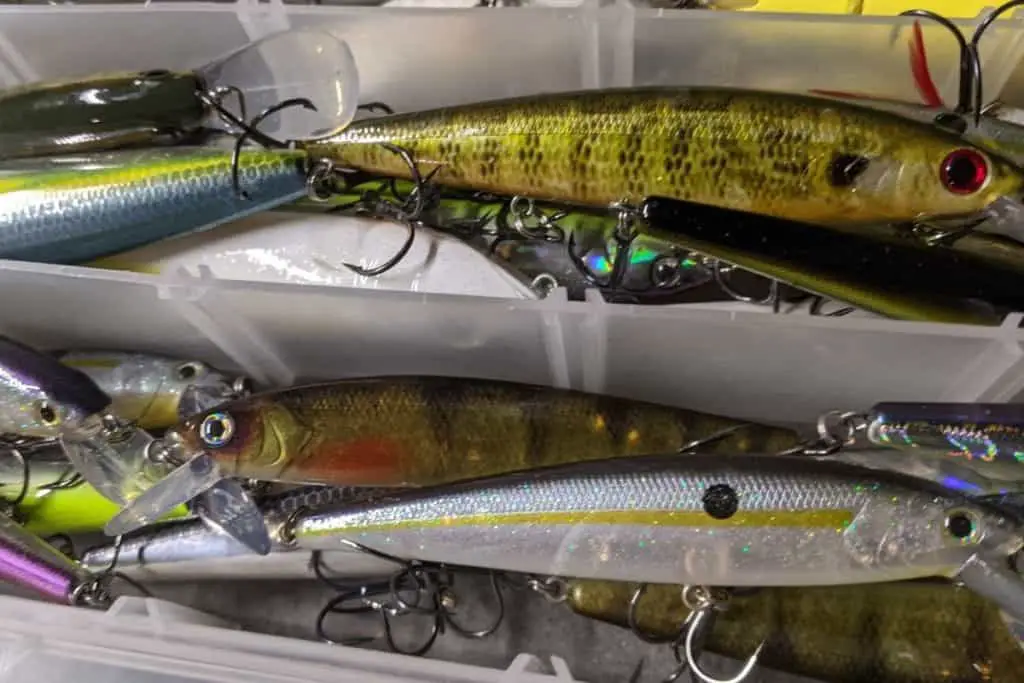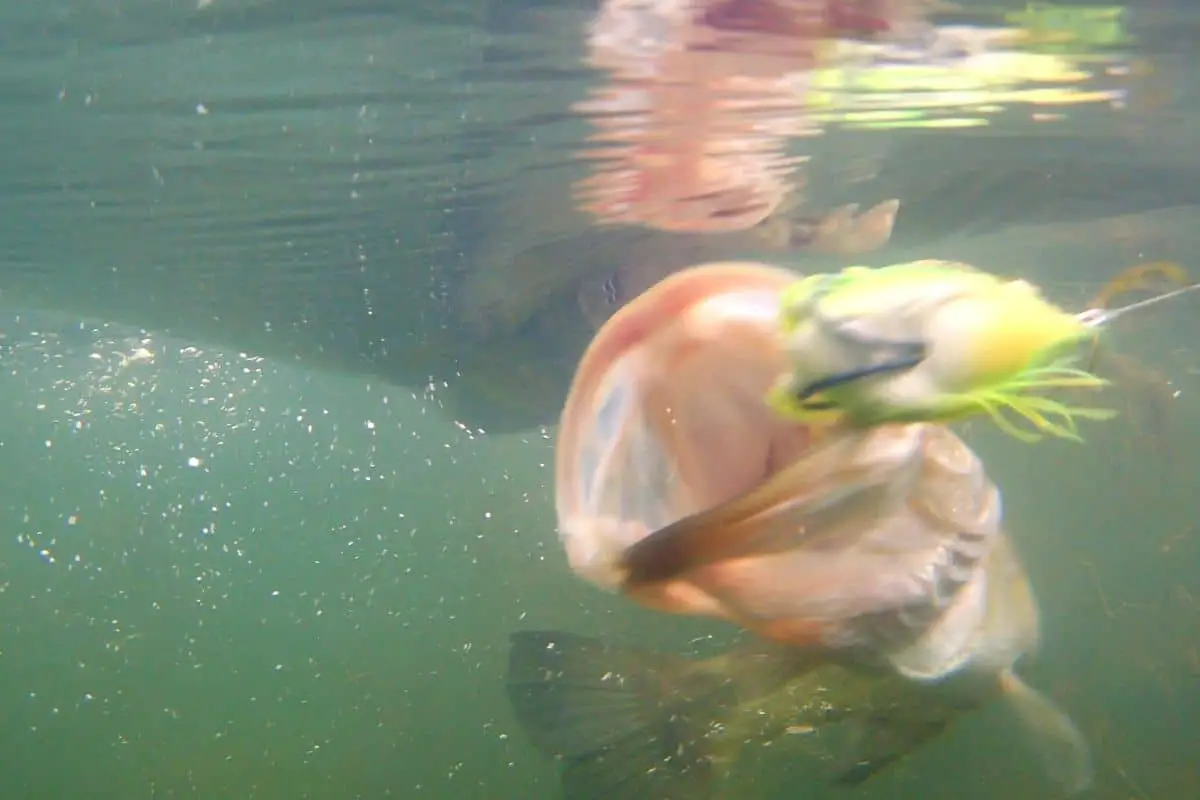People of all ages love to bass fish. It is the most popular game fish in North America because of its wide range, variety of habitats it can live in, and willingness to attack artificial lures.
Bass are attracted to things that present an easy meal. Anglers that offer their lures as unsuspecting prey in places where bass hang out are more likely to catch fish.
To be a successful bass angler, this thought process needs to be at the forefront of every lure selection, presentation, and location.
Bass Are Curious Creatures – Take Advantage of It
One indisputable fact I have witnessed while filming underwater is that bass are curious. Very curious.
If anglers knew how often bass actually look at the lures, know they are there, and then choose to ignore them, we all would be shocked.
When I am filming the action and presentation of different lures in the water there are almost always bass that come and watch. They may even get within inches of the lure, roll over on their side to get a better look at it, and then swim off once the curiosity fades away.
There was even a time when I was downloading footage from the remote camera while it was still under the surface. Out of boredom, I was playing with the headlamps on the sub – flipping them on and off.
Within moments there were multiple bass all in front of the sub watching those lights flash. There were small fish and huge bass all together investigating. I couldn’t believe it. That is extreme curiosity.

How Do We Get Curious Bass to Bite?
As mentioned earlier, presenting our lures as an easy meal is one strategy that can get bass to bite even on the toughest days.
The idea of finesse fishing with small lures and light line is perfect for this, but anglers often make one fatal mistake that keeps them from having the success they should – movement.
We move our lures way too much. Much more than what real prey species do.
If you spend time observing the popular prey species, crawfish, you will soon take note these little crustaceans will sit motionless for a long time. When they do move, it is often at a slow pace unless they feel threatened.
One biologist, that works for Pure Fishing, recently filmed a YouTube video with Edwin Evers. Evers is a decorated pro bass angler that is always learning about bass and their behavior.
This biologist mentioned that in his studies, it became apparent that bass can sense the vibrations of a crawfish walking on rocks. Think about that. That is incredible.
In other words, if there are bass in the area, they know your lure is there. When they come to investigate, that lure needs to look and behave like actual prey. If bass are hyper-aggressive then our lure movement is not that big of a deal, but this golden opportunity doesn’t happen that often.
The Other End of the Attracting Bass Spectrum
The other method to get bass to bite is to make them react.
Many anglers find it almost impossible to fish as slow as I mentioned above. It’s tough.
The next best option is to benefit from what anglers call a “reaction bite.”
Think about this scenario: Someone walks up to you and starts flicking their hands inches away from your face. Odds are you are going to do something about it, like smack their hands.
The only way bass can do this is with their mouth.
There are a lot of lures on the market that excel at triggering bass with this reaction bite approach. Some of the most popular are suspending jerkbaits and squarebill crankbaits.
When fishing lures like jigs, spinnerbaits, and Texas-rigged plastics, the more we bang and bounce those lures into something the more likely the deflection will cause a bass to react and attack.

Fish Slow or Fish Fast – Not in the Middle
Most bass anglers spend their time presenting lures that are neither slow nor fast. I like to say, they are “stuck in the middle.”
This is the worst place to be.
We need to always think ultra-realistic, or get them to react. That’s it.
The very best anglers I have fished with from the professional ranks are masters at one or the other. The ability to switch between the two approaches is a combination for some amazing days on the water.
The Key Difference Between Reaction Bites and Fishing Slow
If an angler chooses to fish finesse presentations at a painstakingly slow pace, it is best to know you are in a high percentage area.
By its nature, finesse fishing is not one that covers water well. Working down 100 yards of shoreline can take forever.
This is where I like to use reaction lures and get bass to reveal themselves. Can I find a spot in that 100-yard stretch where I get a follow? A slash? Or even a bite?
If so, I now have located a higher percentage area. There is something there that the bass are comfortable with. And from filming underwater, I can say with confidence that bass are in schools both large and small much more often than we realize. I rarely find a single bass alone.
Now would be the time to work that area with your reaction lures and then switch over to the slower presentation if needed. You can leave that shaky head or Ned rig sit there and soak with confidence – knowing that there are fish in the area.
That natural curiosity will take over and you can bet your lure will not go unnoticed.
Be safe out there and make sure to encourage someone today. You never know how you may change their life forever.
Isaiah 6:8

